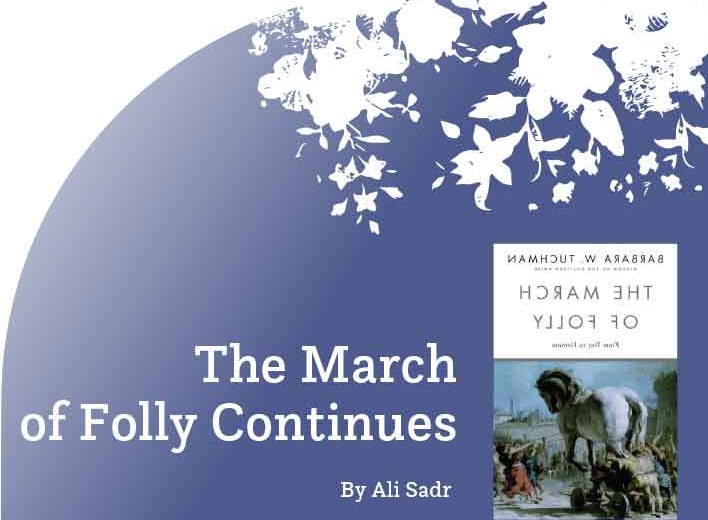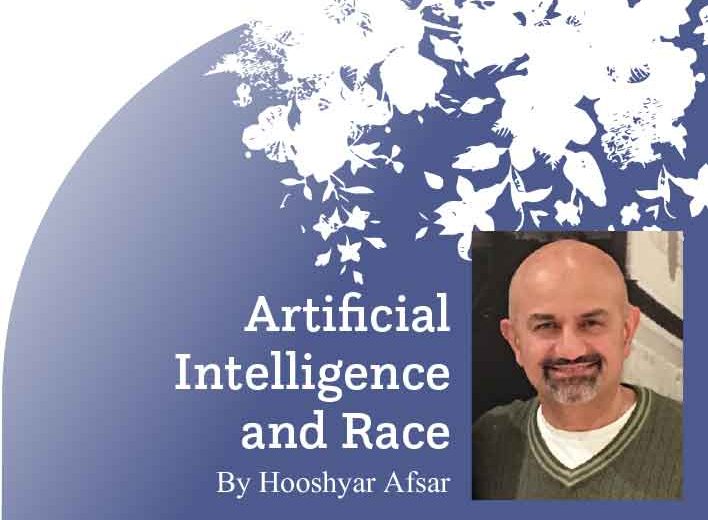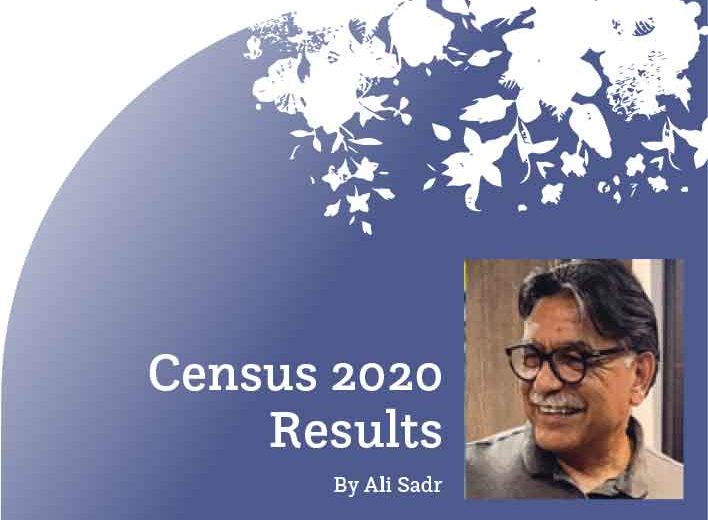Iranian Americans as a Designated Minority Group in The U.S.: Yes or No?
By Hooshyar Afsar

The goal of this article is to discuss minority group status and present both supportive and critical points of view. As a member of the Iranian American community, I am for minority group status yet I will present the critical view in the most honest fashion. I shall attempt to make sound arguments both for and against minority group status designation for our community.
What is a Minority Group?
In a society, when a group of people whose characteristics differ from the main group(s) and their interests are in a subordinate state, that group of people is classified as a minority group. A minority group may not necessarily be a minority in terms of numbers compared to the overall population. For example, one could argue that women are in fact a minority in a patriarchal society since their interests are subordinate to the interests of men. This definitely applies to other minority gender groups, such as a person who identifies as transgender or non-binary. Due to their subordinate state in the society, minority groups are susceptible to discrimination.
The characteristics that distinguish a minority group consist of race, ethnicity, gender, sexuality, national origin, religion, etc. A person’s identity could be at the intersection of multiple such characteristics. For example, an Iranian American woman who happens to be Zoroastrian is at the intersection of multiple minority groups characteristics in the United States, namely ethnicity, national origin, gender, and religion.
What is Minority Status in the United States?
The federal government of the United States recognizes multiple racial and ethnic minorities through a self-identification process by residents. This is done as part of the U.S. Census that is conducted once every ten years. Two federal government entities, namely the OMB (Office of Management and Budget) and USCB (United States Census Bureau), define the following race and ethnicity categories: White; Hispanic, Latino, or Spanish Origin; Black or African American; American Indian or Alaskan Native; Asian (including but not limited to Southeast Asia and South Asia and excluding Middle East and North Africa); and “some other race” with the option to print race.* All these categories except White qualify as a minority.
What are the Implications of Minority Group Status?
According to the OMB, a variety of federal programs that promote anti-discriminatory practices—such as the Equal Employment Opportunity Act of 1972, Title VII of the 1964 Civil Rights Act, and other programs associated with public health and enviromental safety—use the race and ethnicity census data. In a sense, if one ever files a lawsuit claiming discrimination based on race, ethnicity, sex, national origin, sexuality, etc., self-identification as a racial or ethnic minority group will work in favor of such a lawsuit. On the contrary, if one self-identifies oneself as White in the census, that could work against such a case.
The other implication of minority status has to do with minority-owned businesses. Minority Business Enterprise (MBE) is a U.S. designation for businesses that are at least 51% owned, operated, and controlled by one of the following minority groups: African Americans, Asian Americans (excludes people from the Middle East), Hispanic Americans, Native Americans, Pacific Islanders, and women.
Another federal program is the Small Business Administration (SBA) 8(a) minority group status that supports the same above minority groups by providing business planning, loan guarantees, federal government contracts, assistance in contracting opportunities outside of the SBA, training and technical support, and surplus federal government property among other benefits.
As of 1978, the United States recognized people from the Middle East and North Africa, including Iranians and Arabs, as White. Clearly, Iranian Americans are not included in the MBE or SBA 8(a) minority group status. The federal government and certain state governments incentivize MBEs to bid on publicly awarded contracts. According to the Minority Business Development Agency, minorities own more than 9.2 million firms and account for nearly $1.8 trillion in revenues.**
Being designated as a recognized minority also has other implications. In Peyk #198 (March-April 2022), I wrote about students at the University of California, Berkeley, who were able to convince the university to recognize SWANA (Southwest Asian North African) as a racial category in the application process. One result is helping ensure all SWANA applicants (including Iranian Americans self-identified as such during the application process) have fair representation in enrollment and student life rather than being invisible by their dissolution in the White category.
One possible way, and perhaps the most practical way, that Iranian Americans could gain minority status is recognition of SWANA as an official racial category by the OMB and USCB, and by adding this new category to those already recognized by MBE. Such designation will translate to significant financial outcomes for Iranian Americans and all other minority groups that fall under the SWANA category.
Opposing View
Iranian Americans are highly educated and enjoy economic affluence. We need to be grateful for what we have accomplished in this great country without any favoritism or charitable attitude from the U.S. government. That is what we should emphasize as a characteristic of our community that aligns with American values of hard work and good citizenship. This is a source of pride for our community and helps us be better Americans.
We would rather be part of a hard working and accomplished majority than a struggling minority. That is what distinguishes our community from other immigrant communities. The economic affluence we have has not been freely handed to us. We have earned it by studying hard and working hard as law abiding American citizens. We should use such values to distinguish our community rather than try to lower our standards to the less accomplished immigrant communities that need government help.
The racial category of White for Iranian Americans is part of our accomplishment. Iranians and Europeans share a historical heritage that goes back thousands of years. Some of the Aryan tribes who left present-day Siberia during the last ice age migrated to present-day Iran and some of them went to Europe. As Iranian Americans, we should be proud that the U.S. government finally recognized Iranians as White in 1978 and confirmed the historical ties of Iranians and Europeans. Any attempt to present ourselves as non-White is a misrepresentation of our great Iranian historical identity. Do we really prefer to misrepresent our racial identity so that we could take advantage of government programs and taxpayer contributions? Wouldn’t that be unfair to minority groups who need and deserve such help?
A minority status designation that would give us an advantageous position in bidding for government contracts is a misrepresentation of our racial identity and is unethical. The United States has welcomed and accepted Iranian Americans with open arms and has made the American dream available to us. We have achieved the American dream through our commitment to education and hard work. We should continue on that path.
Supporting View
Let’s begin by examining the facts. Are Iranian Americans White?
Race and racial categorization is not a very old notion. Whiteness was introduced as part of Enlightenment, which began in seventeenth century Europe. It was invented for social, political, and economic gain. Race is a social construct and it has no biological or genetic basis. Along the same lines, racism and white supremacy were invented and used to justify hundreds of years of colonialism, slavery, and racial injustice. Fortunately, today’s science has clearly proven that there is no scientific basis for race. Even the U.S. government recognizes that racial categorization in the census does not have any scientific basis and its aim is to identify disadvantaged minority groups to confront discriminatory practices.
The story of Aryan tribes fleeing the ice age and migrating to present day Iran, present day India, and present day Europe is more of a myth than documented history. It is also contradictory since the proponents of these ideas don’t stop to ask, how about those Aryan tribes who migrated to present day India? Why aren’t Indians recognized as White? Also, the reality on the ground tells us a different story. Iran itself is a multi-ethnic and multi-racial society to such an extent that we have Iranians who look European, African, Southeast Asian, Indian, and so on. Another historical fact points to the politics of 1930s Iran, when the founder of the last Iranian monarcial dynasty—namely Reza Shah Pahlavi—who was pursuing western modernization of Iran, was also looking for historical ties to Europeans. He took the Aryan race theory to the extreme and became sympathetic to Nazi Germany; he was later forced into exile (ironically under South Africa’s apartheid regime) after the allies invaded Iran in 1941.
So, the answer is that Iranian Americans are not White. In fact, up until 1978, Iranians were not recognized as White. As Professor Neda Maghbouleh documents in her book Limits of Whiteness, there are clear cases earlier in the twentieth century when U.S. courts did not recognize them as such. Maghbouleh also conducted interviews with dozens of second-generation Iranian Americans across the United States who shared experiences of racism, prejudice, and discrimination growing up in the United States. Last but not least, Maghbouleh documents anti-discrimination lawsuits by Iranians who lost because they failed to self-idefntify as a minority group while they were subject to overt discriminatory behavior.
So, the answer is a clear no. Iranians are not White and their attempt to pass as White has its limits. In fact, self identifying as White in the U.S. Census robs Iranian Americans of their rights as American citizens. These categories were created not as scientific designations but as minority group categorization with the declared goal of using the data for anti-discriminatory programs, policies, and practices. Let’s be clear, we are not discussing the success or effectiveness of such government programs. We are pointing to why they were created and why as a minority group it is our right as American citizens to take advantage of them. That is good citizenship for you.
Next, let’s look at Iranian Americans’ high levels of education and economic affluence. As a result of being dissolved in the White category of the census, we do not have comprehensive data on this subject. It seems like Iranians are, for the most part, highly educated and well off. Unfortunately, not everything that seems to be true is true. The sun rises from the east in the morning and then sets in the west in the evening and it seems like the sun is rotating around the Earth and we all know that is not true. The notions of “highly educated” and “well off” are extended to the community by many and then used to portray us as “exceptional” and “different” from other immigrant communities. There is also a hidden message here: we are not like those immigrant communities, so don’t treat us like them (and by the way we don’t really care how you treat them as long as you treat us well). This logic is misguided. Dehumanization and marginalization of our community—as demonstrated by decades of stereotypical portrayal of Iranians as zeolot terrorists or, at best, conniving, scoundrel rug merchants—will not end by passing as White. It deprives us of effective tools such as data and minority group status that could be utilized to confront discrimination.
Last but not least, if we ever achieve MBE designation and become included in SBA 8(a) minority group status, our Iranian American owned businesses will receive significant business and financial support plus priority in bidding for certain federal and state government contracts. Such achievement will create a more level playing field for Iranian American owned businesses to thrive and be more successful. Yes, we have worked hard for our accomplishments and that is exactly why we deserve to benefit from all that is available to American citizens.
* Starting with the 2010 U.S. Census, Hispanic is distinguished as an ethnicity and not a race.
** mbda.gov/who-we-are/overview
_________________________________
Hooshyar Afsar is one of the founders of Racism Awareness Project (RAP), an educational program on the history of and present-day racism in the United States and its impact on the Iranian American community. RAP has had a variety of educational forums across the United States. Mr. Afsar has written several articles and book reviews on the topic for Peyk and other publications. He can be reached at hoosh.afsar@rapusa.org.

















